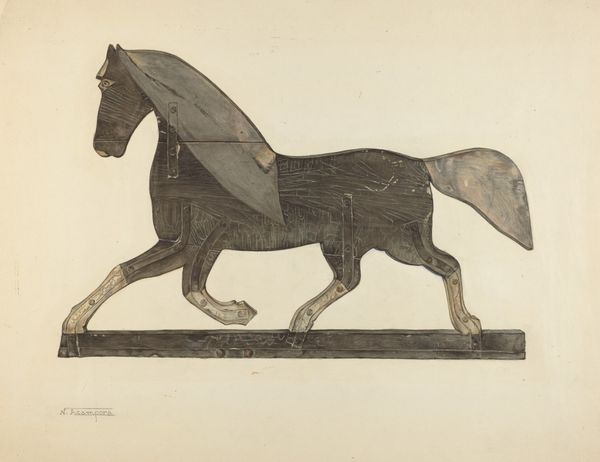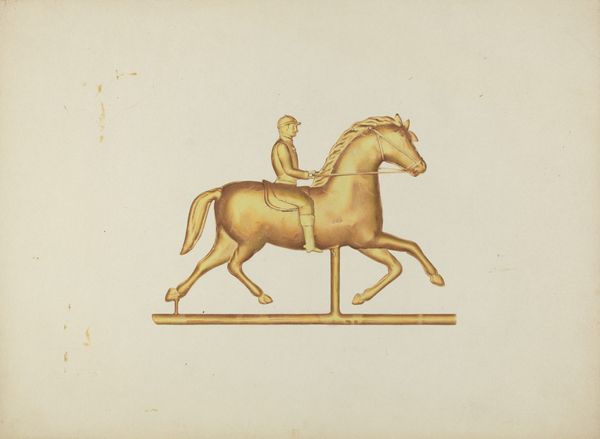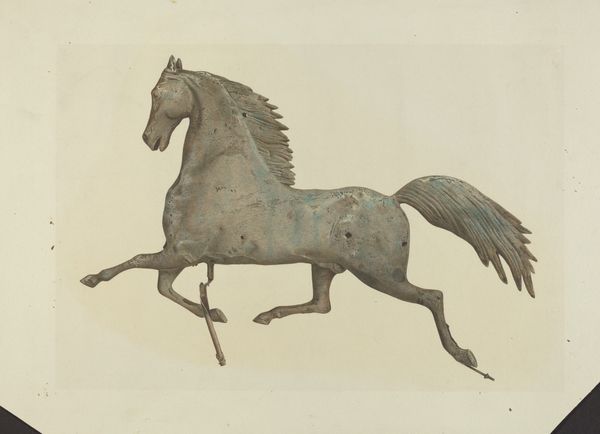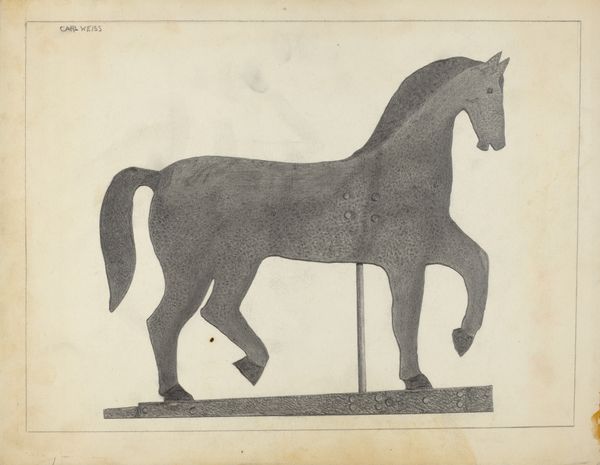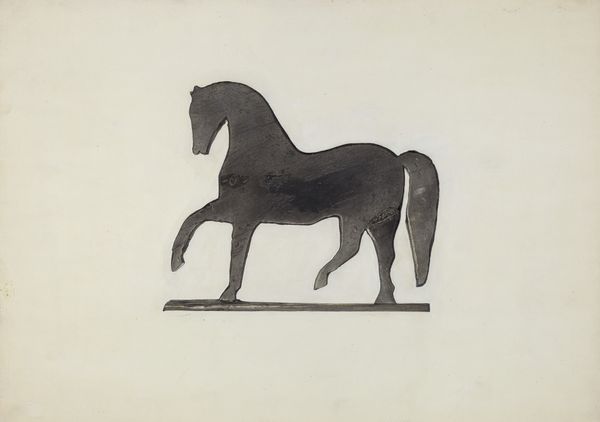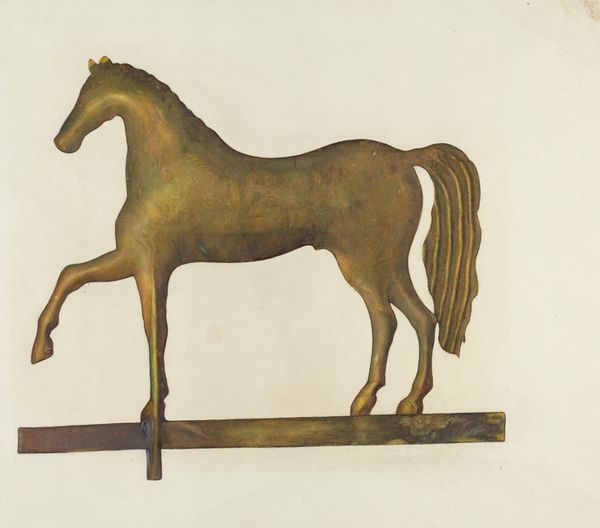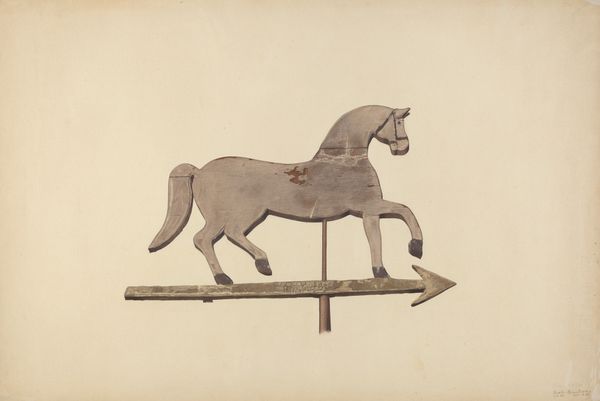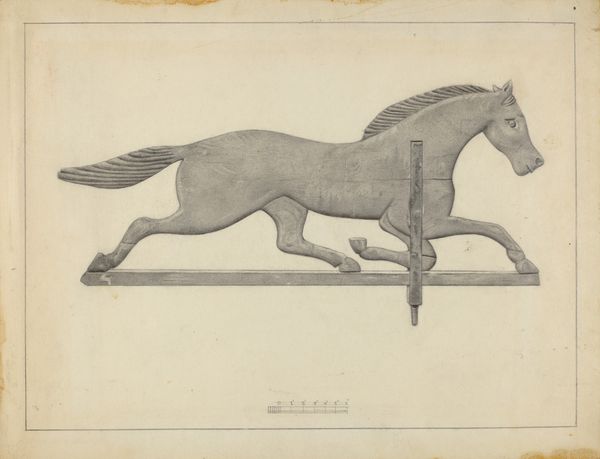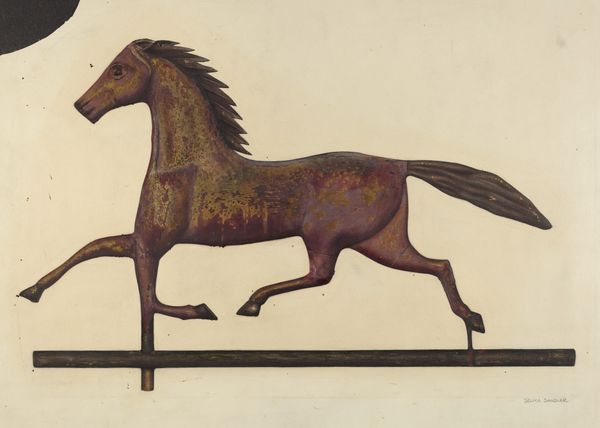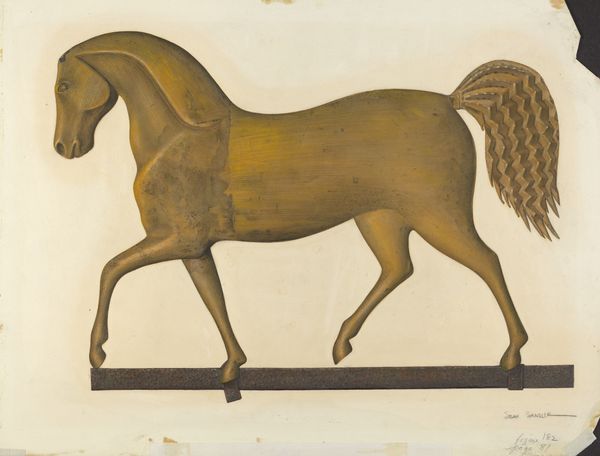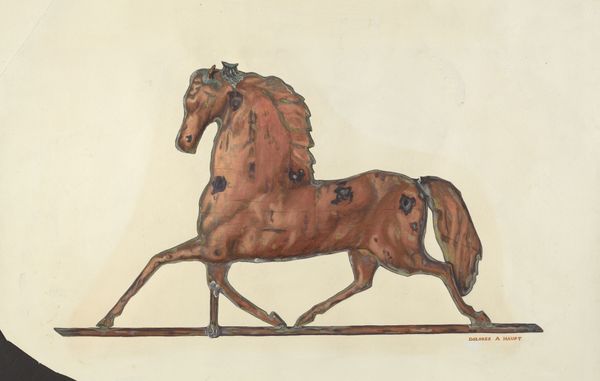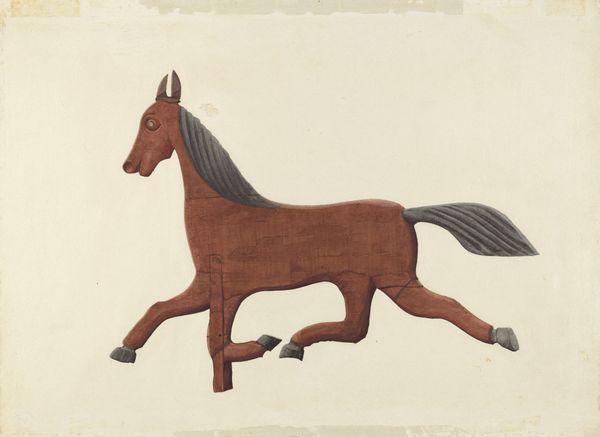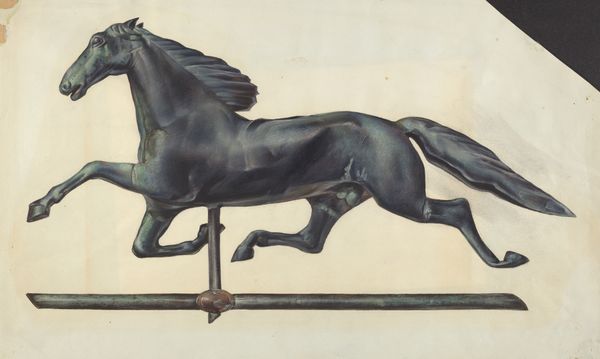
drawing, metal, sculpture
#
drawing
#
metal
#
figuration
#
pencil drawing
#
geometric
#
sculpture
Dimensions: overall: 36.8 x 52.7 cm (14 1/2 x 20 3/4 in.) Original IAD Object: 32" long
Copyright: National Gallery of Art: CC0 1.0
Editor: Here we have “Weather Vane - Horse” from around 1939, made of metal. What strikes me most is the form: it's a classic, almost archetypal image of rural Americana. What can you tell us about it? Curator: It's a great example of folk art evolving into a commercial symbol. Weathervanes, historically functional objects, took on increasingly decorative forms in the 19th and early 20th centuries. The horse became a particularly potent symbol. Why do you think that is? Editor: Maybe it represented freedom, power, or even prosperity in agricultural communities? Curator: Exactly! And mass production democratized these symbols. You didn’t have to be a wealthy landowner to display a beautifully crafted horse weathervane. Consider the role of institutions like Sears, Roebuck and Co., which made items like this accessible to the wider public. What does that suggest about the evolving role of art in American society? Editor: So it went from being a luxury item to a widely available symbol? Curator: Precisely. Think about how images of idealized rural life were disseminated during that period – through advertising, popular culture, and even political rhetoric. How do you think this intersects with ideas of national identity and nostalgia? Editor: It suggests a deliberate crafting of a national story rooted in a romanticized past. I see now it's not just a decorative piece, but a complex artifact of cultural values. Curator: Indeed! By analyzing how this "simple" object was produced, distributed, and consumed, we can gain insight into the cultural landscape of the era. Editor: I didn't realize there was so much history packed into one weathervane! It really shows the power of everyday objects to reflect societal values. Curator: And it’s a reminder that art is never truly detached from its social and historical context.
Comments
No comments
Be the first to comment and join the conversation on the ultimate creative platform.
